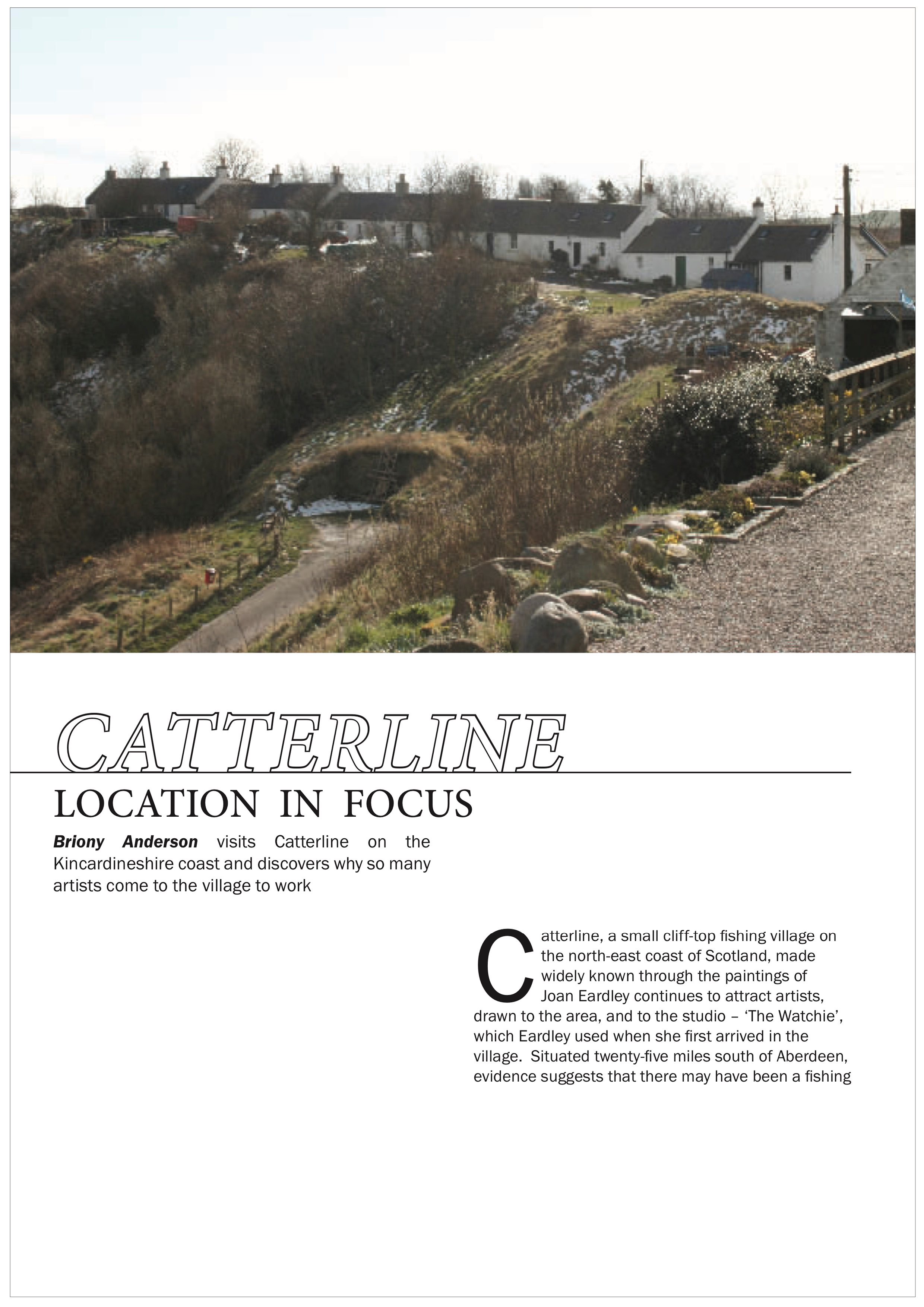2008 —
Catterline in Focus
Catterline in Focus

Catterline, a small cliff-top fishing village on the north-east coast of Scotland, made widely known through the paintings of Joan Eardley continues to attract artists, drawn to the area, and to the studio – ‘The Watchie’, which Eardley used when she first arrived in the village. Situated twenty-five miles south of Aberdeen, evidence suggests that there may have been a fishing community established in Catterline as early as the fourteenth century. Around 1835 the pier was built, a coastguard’s station established and locally, the fishing industry thrived until the turn of the century when it reached its peak, before witnessing a steady decline during the course of the twentieth century.
Joan Eardley at Catterline
Eardley’s discovery of Catterline came in 1951, and this stretch of coast quickly joined inner city Glasgow as the impetus behind her work. It was during an exhibition of Eardley’s work in Aberdeen that friend and artist, Annette Stephen, had taken Eardley to visit Catterline where they came across the ‘The Watchie’ – the coastguard’s watch house, positioned at the highest point in the village and up for sale. It was subsequently bought by Stephen, made weather-tight for use as a studio and available for Eardley to work in. She painted there until she purchased Number 1 The Row as a studio and living space, often painting directly from her front door, looking out over the sea and down to the bay and harbour below. From this point, the seascape, surrounding landscape and its changing seasons were to feature as prominently in her life and work as the tenements and children of Glasgow – her time now divided between these changing urban and rural communities.
Visiting Catterline, it becomes apparent why the place made such an impact on Eardley – the rows of small, quaint, white-washed fishermen’s cottages juxtaposed against the endless northern sea and skies, echo the undulating line of the cliff edge – ‘it’s just a vast waste, vast seas, vast areas of cliff’, Eardley remarked in an interview. She also described the way in which she approached her Catterline paintings, often painting the same scene over and over as if each time, to develop upon the last, believing the more familiarity she had with the subject – the continual changefulness of the landscape – the more she could see in it to translate into her work. In 1959 she purchased Number 18, Catterline, again often painting directly from this spot. For example, Catterline in Winter (c.1963) was painted from this viewpoint. Interestingly, as time progressed, she seemed to move closer to the sea to paint, favouring the direct experience of being near the water to the distant vantage point of the cottages on the cliff, and a photograph taken by Audrey Walker shows Eardley sketching, perched on her shooting stick, in the sea itself. Unlike her Glasgow paintings, the community in Catterline does not feature in a figurative sense, but there is often some form of reference to it – a hint of human presence – whether in the drying salmon nets, fishing boats, washing lines, haystacks, beehives or in the smoke rising from the chimneys – the life of the inhabitants reflected in her paintings. Here, too, as in Glasgow, she was depicting a way of life that was disappearing. By this time, Catterline’s fishing fleet had virtually gone.
Full article: Scottish Art News, Issue 10, pp.24-28 ︎